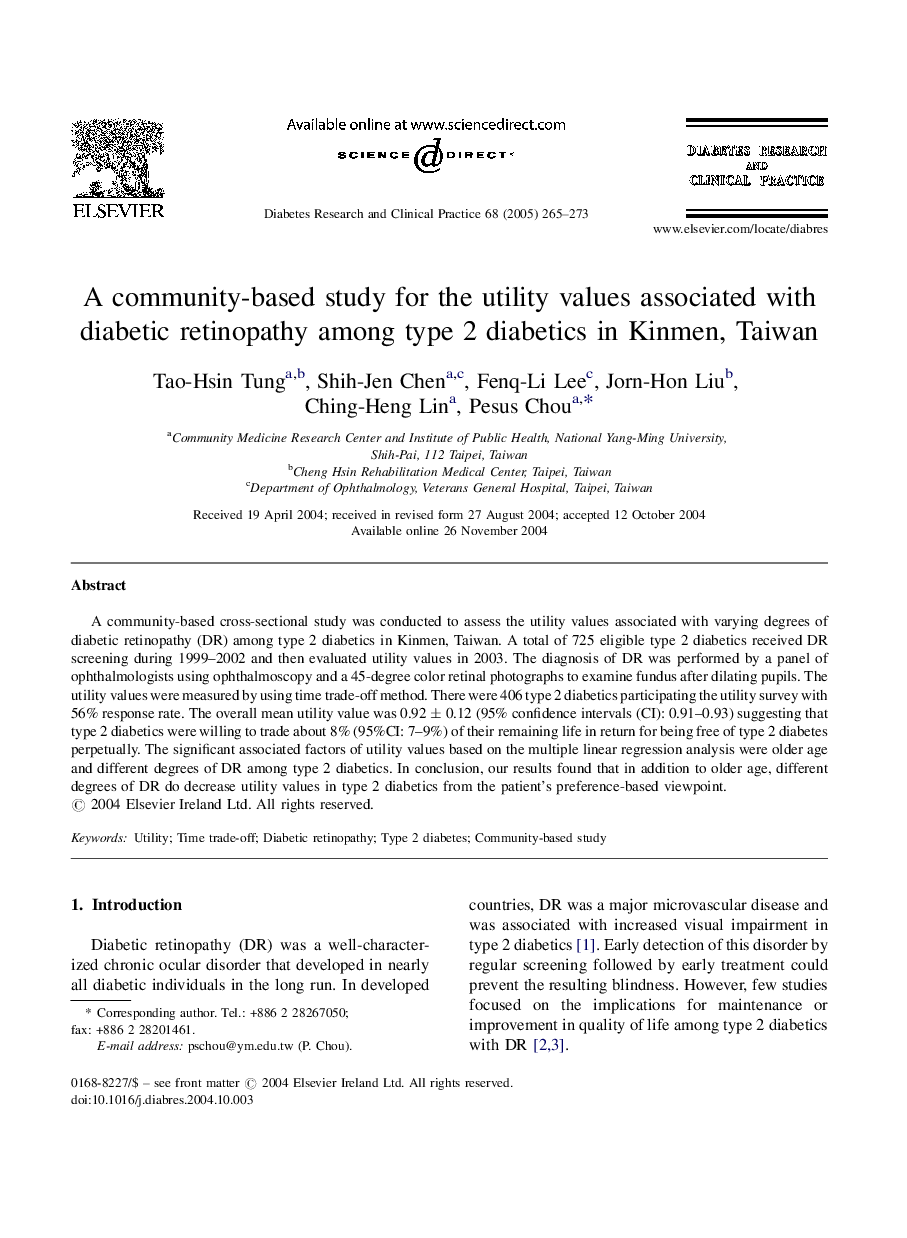| Article ID | Journal | Published Year | Pages | File Type |
|---|---|---|---|---|
| 9112002 | Diabetes Research and Clinical Practice | 2005 | 9 Pages |
Abstract
A community-based cross-sectional study was conducted to assess the utility values associated with varying degrees of diabetic retinopathy (DR) among type 2 diabetics in Kinmen, Taiwan. A total of 725 eligible type 2 diabetics received DR screening during 1999-2002 and then evaluated utility values in 2003. The diagnosis of DR was performed by a panel of ophthalmologists using ophthalmoscopy and a 45-degree color retinal photographs to examine fundus after dilating pupils. The utility values were measured by using time trade-off method. There were 406 type 2 diabetics participating the utility survey with 56% response rate. The overall mean utility value was 0.92 ± 0.12 (95% confidence intervals (CI): 0.91-0.93) suggesting that type 2 diabetics were willing to trade about 8% (95%CI: 7-9%) of their remaining life in return for being free of type 2 diabetes perpetually. The significant associated factors of utility values based on the multiple linear regression analysis were older age and different degrees of DR among type 2 diabetics. In conclusion, our results found that in addition to older age, different degrees of DR do decrease utility values in type 2 diabetics from the patient's preference-based viewpoint.
Related Topics
Life Sciences
Biochemistry, Genetics and Molecular Biology
Endocrinology
Authors
Tao-Hsin Tung, Shih-Jen Chen, Fenq-Li Lee, Jorn-Hon Liu, Ching-Heng Lin, Pesus Chou,
